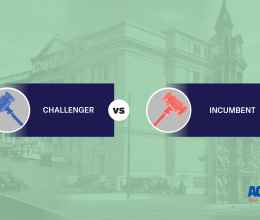COLUMBUS—A new ACLU of Ohio report, Ohio Could Save Big by Implementing Bail Reform: A Fiscal Impact Analysis, illustrates how policy changes could save Ohio $199-$264 million each year. The ACLU of Ohio hired an expert economist to examine court and jail data in four Ohio counties –Athens, Cuyahoga, Franklin, and Vinton - to determine what cost savings could be realized if common sense bail reform policies were implemented.
The ACLU of Ohio recommends the Ohio legislature:
- Create a release valve for everyone – much like the one that currently exists for the wealthy – by instituting a presumption of release which would allow everyone charged with a crime be released the same day as their arrest, unless a prosecutor or judge is concerned the person is a flight risk or poses a threat to a specific person, in which case a conditions of release hearing may be held.
- Require a conditions of release hearing within 48 hours of the accused person’s arrest and detention if they have not already been released.
“We set out to pinpoint exactly how expensive it is for Ohio to unnecessarily jail thousands of pretrial defendants (legally innocent people) on any given day, and the results from our fiscal impact analysis are astonishing,” said Claire Chevrier, Policy Counsel for the ACLU of Ohio. “We now have concrete evidence that our policy recommendations could save Ohio $199 to $264 million each year; that’s hundreds of millions more reasons to enact common-sense bail reform.”
Despite experiencing the lowest crime rates since the 1960s, Ohio’s pre-pandemic pretrial incarceration rate was near the highest level since data was collected beginning in 1970. The most recent statewide estimate showed that in 2018, nearly 12,600 people were incarcerated pretrial on any given day, at an estimated cost of $300 to $400 million. The cost per person, per day in jail is estimated to be between $64.50 and $87.40.
“We’ve been a part of bail reform conversations for many years – from failed legislation to criminal rule changes and the Chief Justice’s Task Force on Bail. Recurring themes were questions about how many people are in jail, why, and how much it costs the state and people in it. It is now clear: Ohio could save big money with bail reform,” added Jocelyn Rosnick, Policy Director for the ACLU of Ohio.
“Our report further reveals that the current system disproportionately punishes and targets Black people and other people of color. Ohio’s current money bond system costs our communities in ways we cannot quantify. True bail reform would promote public safety, end wealth based detention, and allow more individuals to be at home with their families before their trial date,” noted Chevrier.
In all four jurisdictions analyzed, Black people were charged and jailed at much higher rates than white people. In Cuyahoga County, Black individuals were more likely to have a bond set over $10,000 and more likely to be denied release compared to white individuals charged with a crime in the same category.
“Ohio lawmakers have an opportunity to help our state save a ton of money in a safe and responsible way. We must look at all options - especially at a time when the pandemic has forced Governor DeWine to propose massive budget cuts to public education and healthcare. We urge our elected officials to uphold their fiduciary duties to Ohio taxpayers and make the necessary and smart decision to adopt our recommendations and save our state up to $264 million each year,” concluded Rosnick.
To read the fiscal impact analysis in its entirety, visit www.acluohio.org/bailreport









